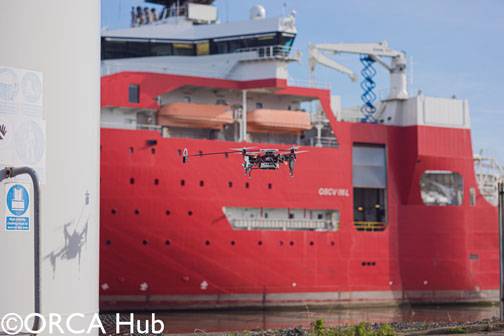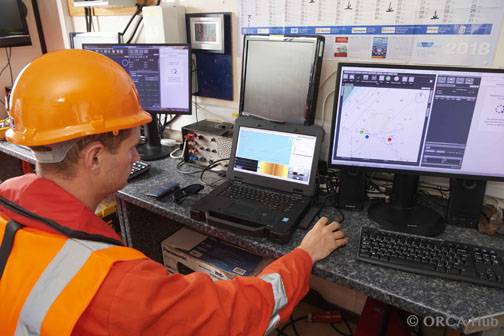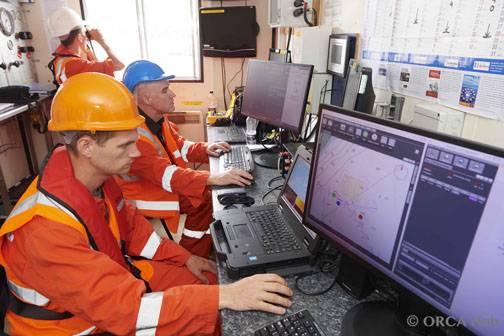

Many of the more advanced mechanics of robotic systems are being developed as part of the Offshore Robotics for Certification of Assets (ORCA) Hub in Edinburgh. It’s a publicly funded project led by the Edinburgh Centre for Robotics (Heriot-Watt University and the University of Edinburgh), in collaboration with Imperial College London and the Universities of Oxford and Liverpool. We spoke with some of their specialists.
First of all, what is robotics? Does that include remotely operated vehicles and autonomous underwater vehicles, for example?
David Lane, Professor of Autonomous Systems Engineering, and Founding Director Edinburgh Centre for Robotics:
“Yes, ROVs and AUVs are robots. They both have smart software to do different things - control, navigate, station keep for the ROV and much more for the AUV that must process its sensor data to understand where things are around it, e.g. from a sonar, and adapt its mission plan when the unexpected happens. It has to do this onboard (at the edge) because communication links are so poor in the ocean, without a cable. Autonomous vehicles have no choice but to control themselves, therefore. Similar to autonomous cars, only the underwater community of roboticists have been developing these systems since seriously for over 25 years.”
 The Imperial College London drone demonstrating autonomous UAV sensor placement at the ORE Catapult facility in Blyth. The drone is equipped with a winch-tethered magnet and passive wheels capable of perching on, and sliding along, both vertical and horizontal surfaces.
The Imperial College London drone demonstrating autonomous UAV sensor placement at the ORE Catapult facility in Blyth. The drone is equipped with a winch-tethered magnet and passive wheels capable of perching on, and sliding along, both vertical and horizontal surfaces.
Moving topside, aerial systems have become a part of the day-to-day offshore inspection toolbox, but is there more they can do, and how can that be achieved?
Ashutosh Choubey, Aerial Robotics Lab Program Manager at Imperial College London:
“The development of aerial robots for the offshore industry is increasingly complex and challenging, due to missions at sea being faced with limited communication in hard-to-reach locations and a harsh environment, resulting in a risk to human safety. The solution requires advanced control mechanisms, autonomous manipulation, energy management, and data analytics. Nature acts as a source of inspiration for the design of novel artificial systems that better interact with complex environments. A team at Imperial College London, led by Dr. Mirko Kovac, Director of the Aerial Robotic laboratory, are developing aerial-aquatic robots that are biologically inspired, e.g. by gannets (which fly and dive), fish, spiders, birds perching, etc., that can perform monitoring and manufacturing tasks in such a challenging environment.
“Dr. Kovac's research group has developed a variety of robotic platforms that are capable of sensor placement and manipulation while airborne, covering a full suite of inspection and maintenance features, focusing on robustness within harsh environments, while decreasing energy consumption.
“One of these is an aerial system that can fix a tether to a surface, allowing for proximity or direct contact with a target surface. Perching is particularly valuable in windy conditions where free flight is dangerous or impossible. An autonomous flight control stack enables passive interaction with target surfaces, allowing it to safely place a sensor on infrastructure elements. Such sensors contain the ability to gather and transmit real-time IoT and non-destructive evaluation data and enable wireless communication frameworks. These aerial platforms can conduct wall-thickness scanning of a horizontal surface with continuous contact during operation, as well as various manipulation tasks.
“Another is an aquatic micro aerial vehicle that has the ability to transition autonomously from flight to water and vice versa. This underwater operation allows robots to perform many new applications, such as water sampling (e.g. to monitor disaster scenarios or perform scientific measurements), or inspection of underwater infrastructure.”
How do we deal with initial (or permanent) human/robot interaction where systems are deployed among the workforce?
Prof. Helen Hastie, ORCA Hub theme lead for Intelligent Human-Robot Interaction with Explainable AI, says:
“In ORCA, techniques are being investigated for human-robot interaction (HRI) of systems with varying levels of autonomy. Transparent interaction that can explain what the system is doing and why, is key for situation awareness and human-robot teaming, ensuring safe operation, increased operator confidence and, as a result, increased adoption.
“In addition, it can provide an audit trail and, ideally, is designed into the system from inception, adhering to ethical best practices and rigorous standards, such as the emerging IEEE standards on transparency and ethical design (P7001/P7000). HRI techniques investigated on ORCA include sophisticated visualization of plans and an Amazon Alexa-style personal assistant, for real-time updates and explanations through voice.
“Prototypes have been demonstrated and tested with real operators for autonomous underwater vehicles and ground robots on offshore platforms, both with real robots and in simulation through digital twins. Furthermore, human factors studies have shown the readiness of operators to accept autonomous systems through such transparent interaction techniques.” Testing of the University of Heriot-Watt’s MIRIAM (Multimodal Intelligent interaction for Autonomous systeMs), using real autonomous underwater vehicles (AUVs). A conversational interface being developed to manage and monitor autonomous unmanned vehicles (UxVs) as they work independently, in teams or in swarms to carry out their missions.
Testing of the University of Heriot-Watt’s MIRIAM (Multimodal Intelligent interaction for Autonomous systeMs), using real autonomous underwater vehicles (AUVs). A conversational interface being developed to manage and monitor autonomous unmanned vehicles (UxVs) as they work independently, in teams or in swarms to carry out their missions.



